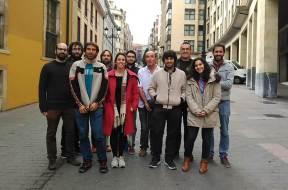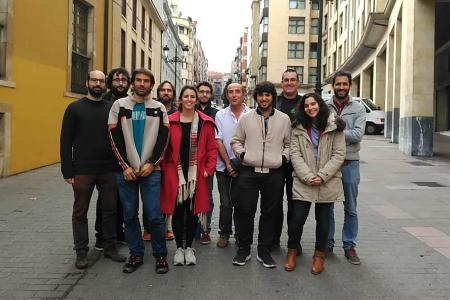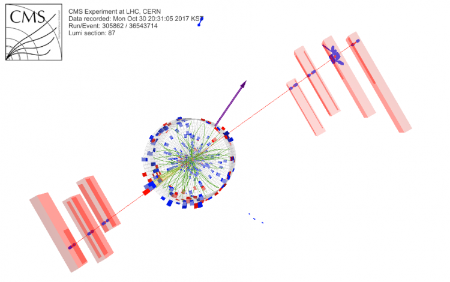The academic institution's High-Energy Experimental Physics Group has successfully detected high-momentum (higher energy) muons to the highest level of precision so far achieved, representing a fundamental advance for the next phase of the Large Hadron Collider
The University of Oviedo's High-Energy Experimental Physics Group has led the discovery of new techniques to identify high-momentum (higher energy) muons in the Large Hadron Collider (LHC) at CERN. Muons are elementary particles - that is, they are not composed of other particles. This meets one of the main objectives of the CMS (Compact Muon Solenoid) experiment, since the search for these particles is essential to the physics work carried out at CERN's LHC and had not been accessible in previous experiments. Progress is therefore essential for the next phase of operation of the LHC: the High-Luminosity LHC (HL-LHC).
In the HL-LHC, the energy and what research staff calls "luminosity" (that is, the number of collisions per second and throughout the collection of data) will be increased. This means that, for statistical reasons, and for pure energy conservation, new high-mass particles can be produced and their properties studied. Under some of the preferred theoretical models in which the existence of these new particles is predicted, it is preferable if they disintegrate into high-momentum muons.
To ensure that no new potential particles are missed, research staff have achieved a high level of efficiency in detecting and identifying these high-momentum muons, as well as good levels of accuracy in measuring their properties. In an experiment such as CMS, reconstructing and identifying muons becomes more complicated as their energy increases. Therefore, new techniques and algorithms must be developed.
The new results show that CMS has excellent efficiency levels in reconstructing this type of muon up to current values of the order of 1 TeV. At this level of energy, the resolution of the measured momentum is of the order of 5-6%. Improvements in muon reconstruction will enable the search for new particles with even higher efficiency and better resolution, during the LHC's Run-3 - whose data collection is expected to start from 2021 and then during the high-luminosity LHC.
The High-Energy Experimental Physics Group - whose research staff form part of the Physics Department and the ICTEA (the University Institute for Space Sciences and Technologies of Asturias) - has lengthy experience in studying top quark properties with numerous publications and participation at many conferences.





